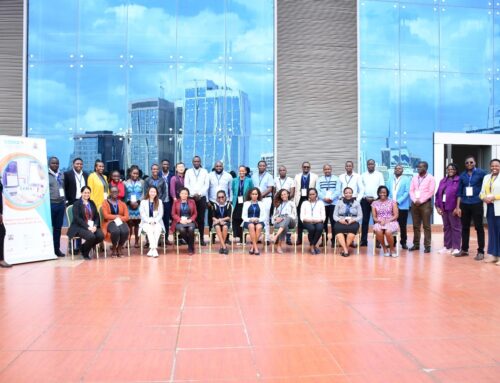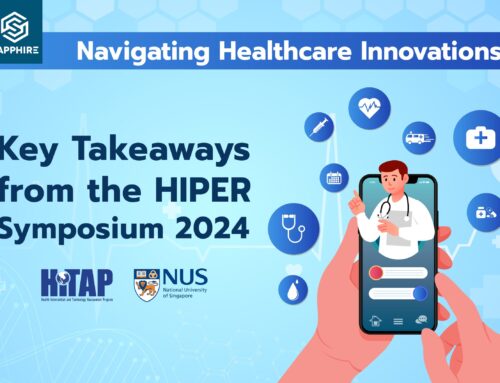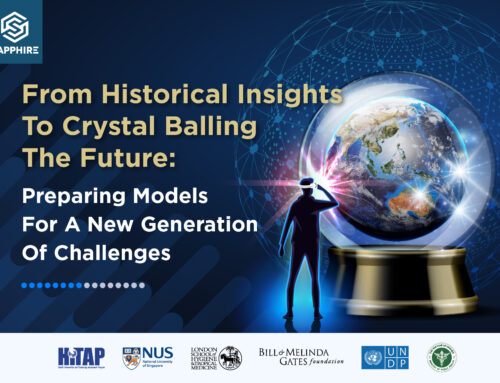This year, the Prince Mahidol Award Conference or PMAC 2021 explores our current COVID-19 crisis, with a focus on things that were (factors that led to the pandemic), things that are (pandemic response) and things that could be (lessons learned), towards shaping equitable, healthy systems as we move forward. Technology has been identified as a megatrend, playing a central role in many of our responses to health issues, including in this pandemic, as demonstrated by the rapid development of a vaccine. To further recognize how the advances in science and technology can aid us in preparing for the next crises, the Health Intervention and Technology Assessment Program (HITAP), along with Chatham House and the United States Agency for International Development (USAID), conducted a webinar as part of PMAC 2021 titled “Accelerating Advances in Science and Technologies to “Prevent, Detect, Respond to and Recover From” Future Threats”. Introduced by Prof. David Harper from Chatham House and moderated by Ms. Cecilia Oh from the United Nations Development Programme (UNDP), this session was unique in bringing together different dimensions of the pandemic, such as public health, climate change, and sciences. Several interesting themes emerged from these discussions, most importantly that for technology to be truly effective, it must work alongside human behaviours and systems, encourage interdisciplinary, policy-linked action and ensure that data access does not translate into health inequalities between people and communities.
Evidence is the cornerstone of formulating health policies and the need for evidence-driven responses to health outbreaks was repeatedly acknowledged by all speakers. Dr. Nantasit Luangasanatip from the Mahidol Oxford Tropical Medicine Research Unit (MORU) discussed how in Thailand, mathematical modelling is a critical component of COVID-19 vaccination programme planning. The model, developed by the COVID-19 International Modelling Consortium (CoMo Consortium), is helping researchers evaluate COVID-19 vaccines to identify the priority vaccine characteristics and determine what would be the optimal price of the vaccine in the Thai setting. Dr. Tegan Blaine, who works at USAID, also shared an example of how researchers were able to estimate future patterns of diarrheal disease and malaria in Mozambique by bridging health data and climate data in a predictive model.
Evidence-informed policymaking relies on the availability of high-quality data. Yet access to accurate data remains patchy and restricted in many parts of the world and this can have far-reaching consequences. “Those who have access to data will have better health than those who don’t and that shouldn’t be the case” remarked Dr. Naveen Rao, representing the Rockefeller Foundation. He described access to data as a source of inequality or in his words, “a class divide”. Open data is a fundamental movement tackling the “data access divide” and with the major publishing giants (e.g. Nature and Wiley) guaranteeing open-access to COVID-19-related research [1], researchers from all corners of the world have been able to share and digest knowledge on COVID-19 freely and swiftly. Whilst there is still a long way to go with the open-data movement, the current pandemic has demonstrated that data sharing in public health emergencies is not only possible but paramount to effective public health responses.
Dr. Sylvie Briand from the World Health Organization, stated that the solution does not solely lie in expanding access to data, but also increasing data literacy. “We need to teach all generations how to use, how to analyse and how to interpret data” she asserted. COVID-19 news is being spread faster and further than ever before and there are growing concerns relating to the ability of the general public to interpret scientific information correctly [2]. If we take the preliminary clinical trial results as an example, most of the world’s news channels reported on the 90% efficacy rate for the Pfizer/BioNTech COVID-19 vaccine, but is the meaning of vaccine efficacy being adequately understood by the public? Time will tell.
All speakers alluded to the importance of human dimensions of sciences, data, and technologies. Dr. Colin Quinn from USAID further highlighted this message in his concluding remarks, emphasizing on the importance of this aspect in capitalising on available technologies for pandemic response and preparedness which are now more advanced than they have ever been. Dr. Tegan admitted that as researchers, we do not necessarily try to understand human-centred operations and processes such as logistics and planning which are the tangible backbones of delivering health technologies. Discussing an example of malaria predictions in East Africa, she acknowledged that the model did not adequately support policy improvements as it did not account for drug and staffing schedules in the region. Echoing Dr. Sylvie’s sentiments on the need to establish clarity in the “tsunami of information and misinformation” we have witnessed alongside the pandemic, Dr. Tegan agreed that one important step is getting people to trust science and models.
In addition to these missed opportunities, speakers also emphasized the importance of global collaboration and solidarity to truly ensure that scientific progress can be translated into evidence-informed policy. Dr. Naveen and Dr. Nantasit focused on using data and technology for optimal resource use in health decision-making and ensuring a reduction in health disparities. Collaborative approaches, not just between countries, but also between disciplines such as health and climate change, nutrition and education are integral to a holistic response to health security. The spill-over between environmental and human health has been a vital lesson from COVID-19, and we must continue to pay attention to these intersections in research and policy.
All in all, the speakers maintained a sense of optimism for the role that technology can play in addressing the current challenges. They all concurred that by making best use of global evidence, we can make the world safer from and better prepared for global health threats. What was clear from the dialogues was that moving forward, humans need to be placed at the centre of health innovation. So, if our battle plan to tackle future outbreaks involves leveraging technology, we must work to not only develop new health technologies, but also to build human trust in those health technologies.
References:
- Bobrov E. Open Data can be advanced by the COVID-19 pandemic, but will still require a comprehensive approach. 2020. https://elephantinthelab.org/open-data-can-be-advanced-by-covid-19-but-will-still-require-a-comprehensive-approach/
- Backhaus A. Common Pitfalls in the Interpretation of COVID-19 Data and Statistics. 2020. https://www.intereconomics.eu/contents/year/2020/number/3/article/common-pitfalls-in-the-interpretation-of-covid-19-data-and-statistics.html



